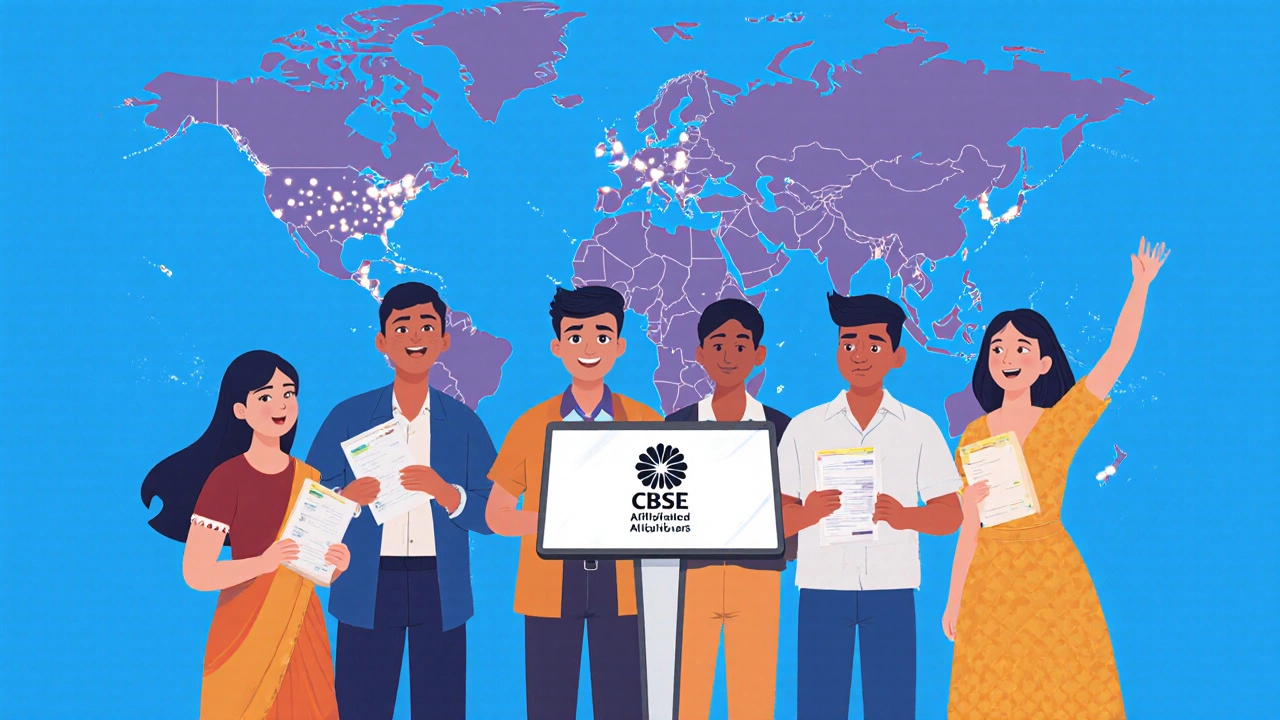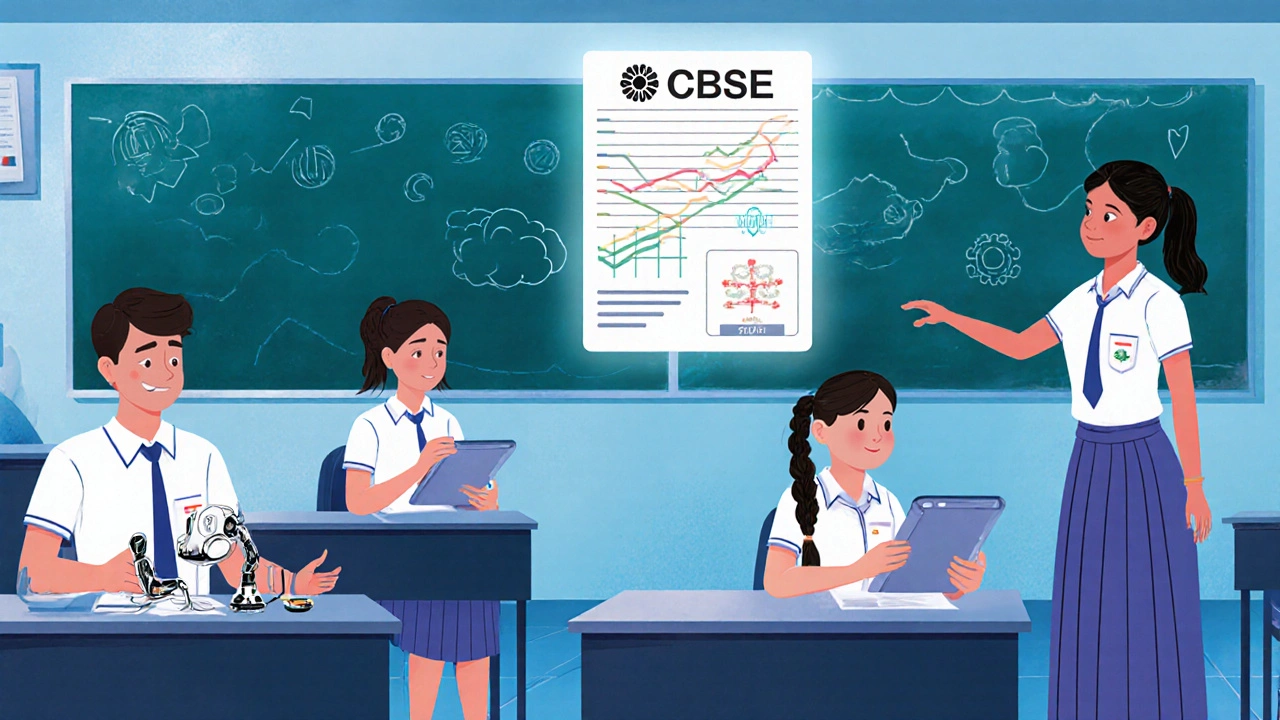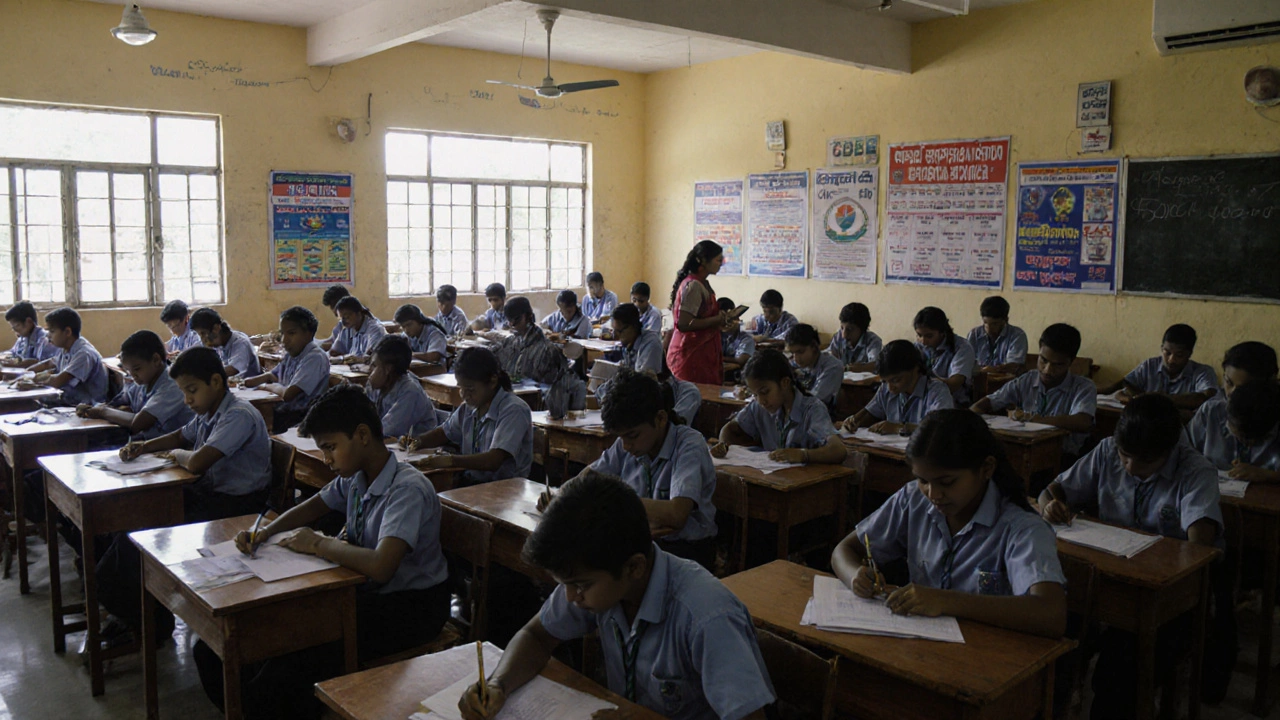CBSE Student Enrollment Calculator
Estimate total CBSE student enrollment based on official data. Note: Official figures include private candidates which may exceed the total student count.
More than 2.5 crore students are enrolled in schools affiliated with the Central Board of Secondary Education (CBSE) across India and abroad as of 2025. That’s more than the entire population of countries like Belgium or Portugal. CBSE isn’t just another education board-it’s the largest in the country, and one of the biggest in the world, serving students from Class 1 all the way through Class 12.
Why CBSE Has So Many Students
CBSE’s massive reach isn’t accidental. It’s built on structure, mobility, and alignment with national exams. Families choose CBSE because it’s the most common board for students who move often-military families, government employees, and business travelers rely on it. A student can start in Delhi, move to Bangalore, and still follow the same syllabus, textbooks, and exam pattern. That consistency matters.
Another big reason: CBSE is the default board for competitive exam prep. JEE Main, NEET, CUET, and other national-level tests are designed around the CBSE curriculum. Schools know this. Parents know this. So even if a family lives in a rural town with no major coaching center, they still pick CBSE because it’s the shortest path to engineering or medical college.
Breakdown of CBSE Enrollment
The 2.5 crore figure isn’t just a rough estimate-it comes from CBSE’s own annual reports. Here’s how it breaks down:
- Class 1 to Class 8: Around 1.4 crore students
- Class 9 and Class 10: About 65 lakh students
- Class 11 and Class 12: Nearly 4.5 crore students
Wait-that adds up to more than 2.5 crore? That’s because the Class 11-12 numbers include both regular and private candidates. Many students who failed in previous years or switched boards reappear as private candidates. The actual number of students studying in CBSE-affiliated schools at any one time is closer to 2.1 crore.
CBSE has over 25,000 affiliated schools in India alone. Another 250+ are spread across 28 countries-from Abu Dhabi to Bangkok to Nairobi. International schools teaching the Indian curriculum often pick CBSE because it’s recognized by universities in the UK, Australia, Canada, and the US.
Who’s Enrolling? The Real Story
CBSE isn’t just for urban elites. In fact, over 60% of its students come from Tier 2 and Tier 3 cities, and even smaller towns. Schools in places like Raipur, Gorakhpur, or Jodhpur now have CBSE sections because parents want their kids to compete on a national level. The board’s focus on practical learning, internal assessments, and reduced syllabus pressure has made it more attractive than older state boards.
Girls make up nearly 52% of CBSE’s student population-slightly higher than boys. That’s a shift from a decade ago, when boys dominated in science streams. Today, more girls are opting for PCM (Physics, Chemistry, Math) and even Computer Science, thanks to better access and targeted initiatives like the CBSE Girls’ STEM Program.

How CBSE Compares to Other Boards
Here’s how CBSE stacks up against India’s other major boards:
| Board | Approx. Enrollment | Key Strength |
|---|---|---|
| CBSE | 2.5 crore | National exam alignment, mobility, uniformity |
| ICSE/ISC | 22 lakh | Comprehensive English, detailed curriculum |
| UP Board | 1.1 crore | Low cost, state-specific focus |
| Maharashtra Board | 95 lakh | Regional language support, local relevance |
| Tamil Nadu Board | 85 lakh | Strong emphasis on Tamil, state exams |
CBSE’s enrollment is more than double that of ICSE and nearly 2.5 times larger than UP Board’s. Even though state boards serve more students in their own regions, CBSE dominates nationally because of its mobility and exam relevance.
What’s Driving Growth?
Three things are pushing CBSE enrollment higher:
- Government push: The National Education Policy (NEP) 2020 encourages standardization, which benefits CBSE’s national model.
- Digital integration: CBSE’s online portal for results, sample papers, and student support makes it easier for parents and teachers to manage learning.
- Private school expansion: New CBSE-affiliated schools open every year, especially in smaller cities. Many are run by trusts or education companies looking for a proven brand.
In 2024 alone, over 1,200 new schools joined CBSE. That’s an average of three new schools every day. Most of them are in states like Uttar Pradesh, Bihar, Madhya Pradesh, and Odisha-places where education demand is rising fast.

Challenges Behind the Numbers
More students don’t always mean better outcomes. CBSE schools face real issues:
- Teacher shortages: In some districts, one teacher handles 60+ students per subject.
- Infrastructure gaps: Labs, libraries, and even clean toilets are missing in many rural-affiliated schools.
- Pressure on students: Even with reduced syllabus, exam stress is high because parents tie success to JEE and NEET.
CBSE has tried to fix this with competency-based assessments, reduced rote learning, and mental health modules. But implementation varies wildly from school to school. A student in a Delhi private school gets far more support than one in a government-aided CBSE school in Jharkhand.
What’s Next for CBSE?
CBSE is moving toward a more flexible, skill-based system. Starting in 2025, Class 9 and 10 students can choose from a wider range of subjects-including Artificial Intelligence, Financial Literacy, and Yoga. The board is also piloting a digital report card system that tracks skills, not just marks.
By 2027, CBSE plans to phase out the traditional Class 10 board exam and replace it with school-based assessments. That’s a big shift. If it works, enrollment could climb even higher-because parents will see it as less stressful and more fair.
For now, CBSE remains the most trusted path for millions of Indian families. It’s not perfect, but it’s the most reliable system we have for connecting students to national opportunities.
How many students appear for CBSE Class 10 exams each year?
Around 20 lakh students appear for the CBSE Class 10 board exams annually. This number includes both regular students from affiliated schools and private candidates who reappear after failing or switching boards. The pass rate typically hovers between 90% and 94%.
Is CBSE harder than state boards?
It’s not necessarily harder-it’s different. CBSE focuses on conceptual understanding and has a more standardized, national-level syllabus. State boards often emphasize local languages and regional content. CBSE exams are generally considered more challenging for students who haven’t been exposed to competitive exam patterns, but they’re easier for those preparing for JEE or NEET because the content matches directly.
Do CBSE students have an advantage in college admissions?
Yes, especially for national institutions. Most top engineering and medical colleges in India use JEE Main and NEET scores, which are based on CBSE syllabi. Universities abroad also recognize CBSE as a credible board, so students from CBSE schools often have smoother applications for overseas programs. State board students can compete too, but they may need extra preparation to bridge the gap in exam patterns.
Can a student switch from a state board to CBSE?
Yes, but it’s easier at certain points. Switching from Class 8 to Class 9 is common and usually smooth. Switching after Class 10 is possible, but students must complete Class 11 and 12 under CBSE as new admissions. The board doesn’t allow partial transfers. Students should check with the school for eligibility and subject compatibility.
Are CBSE schools more expensive than state board schools?
Not always. Many government-aided CBSE schools charge fees similar to state board schools. The higher costs are usually in private, urban CBSE schools that offer better infrastructure and extra programs. In rural areas, CBSE-affiliated schools often have low fees and receive government support. Cost depends more on the school’s management than the board itself.
